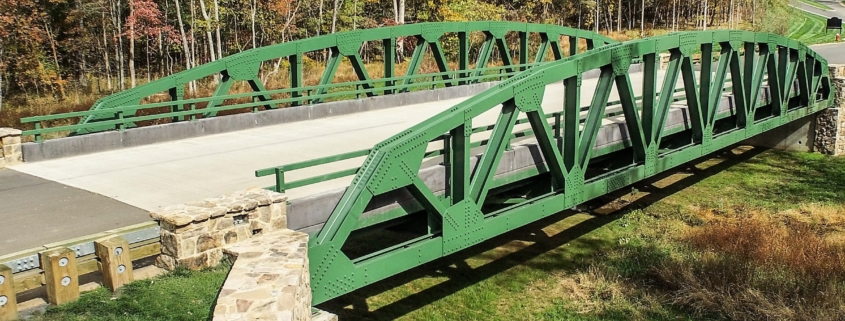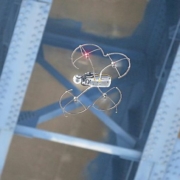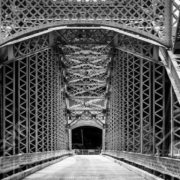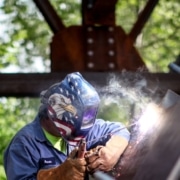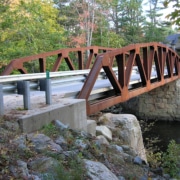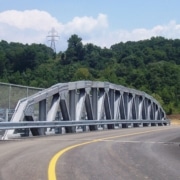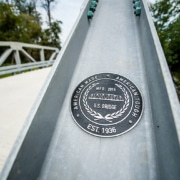Truss Bridge Design Improves Traffic Safety While Reducing Project Costs
History of Existing Bridges
The old wooden bridges on both Ezell Road and Overhead Bridge Road in Spartanburg County, S.C., were in need of replacement. The load ratings on both bridges had been decreased due to their deficient SD ratings. These single-lane structures had served the citizens of Chesnee in Spartanburg County for years while providing safe passage over the CSX track below. However, it was time for replacement.
Aside from the poor SD rating, the bridges, built in 1940, ran perpendicular to the railroad, causing a significant issue with sight lines for those traveling on either road. Large, long curves were necessary at both ends of the bridge in order to line up with the angle of the crossing. As a result, there had been numerous serious car accidents on the approach roads as well as on the bridge. Additionally, due to the short-span capabilities of the wooden superstructure, at least three piers were required to bridge the gap over the track. This was not an ideal situation for either CSX or Spartanburg County.
Next Steps for Bridge Replacement
Faced with the deterioration of the single-lane wooden bridges and the need to have superstructures that conformed to today’s traffic and load requirements, Spartanburg County called upon synTerra, a consulting engineering firm in Greenville, S.C., to handle the projects. synTerra, in turn, contacted U.S. Bridge to assist in providing structures that would meet all design criteria and provide an element of aesthetics.
For the Ezell Road bridge replacement, a 108-ft x 29-ft U.S. Bridge clear span, all-bolted Cambridge-style truss bridge design with a self-weathering finish and a live load rating of HL93 was chosen. To maintain continuity with the Ezell Bridge project, the county also chose a Cambridge-style, self-weathering truss bridge design for the Overhead Bridge Road, with a clear span length of 104-ft x 29-ft wide with a load rating of HL93. The roadway railings for both bridges were w-beams and both were also finished with concrete decking.
The bridges were expanded from the original one lane to two full lanes with a shoulder. There was also no need for piers as the U.S. Bridge structures could easily clear span the length required. The Cambridge style truss can clear span up to 200 ft, and the larger U.S. Bridge Freedom Series Thru Truss can clear span up to 300 ft. Both bridges had a “track to underside of bridge” clearance that exceeded the minimum requirements.
As safety was important for both synTerra and U.S. Bridge, it was recommended that both bridges have a significant skew of 29° LF and 24° RF respectively in order to minimize the requirements for long and dangerous curves on the approach roads. This recommendation significantly improved the sight lines around the bridges, resulting in a reduction in the number of accidents.
Both projects were made possible through joint participation of Spartanburg County and CSX as well as the availability of C-Funds and CIP Funds.
Thanks to our friends at Roads & Bridges for publishing this story.

